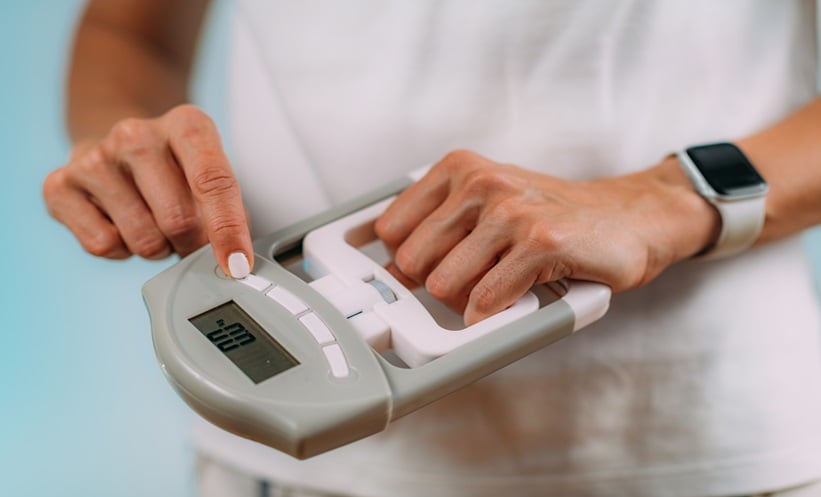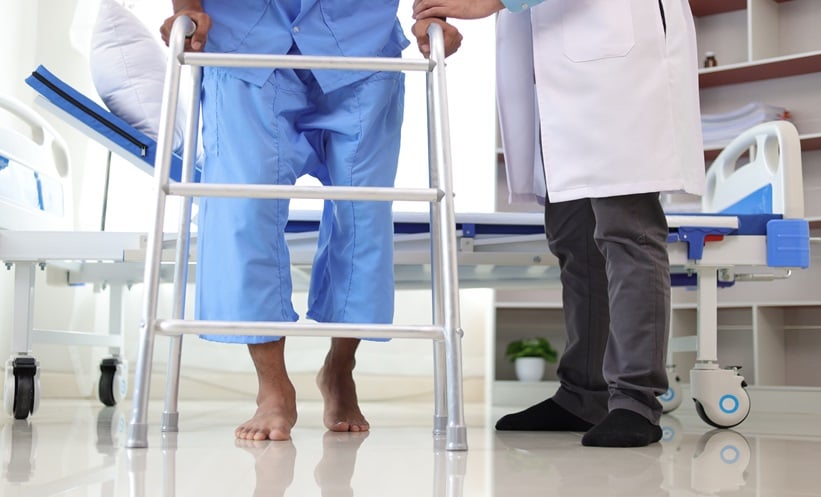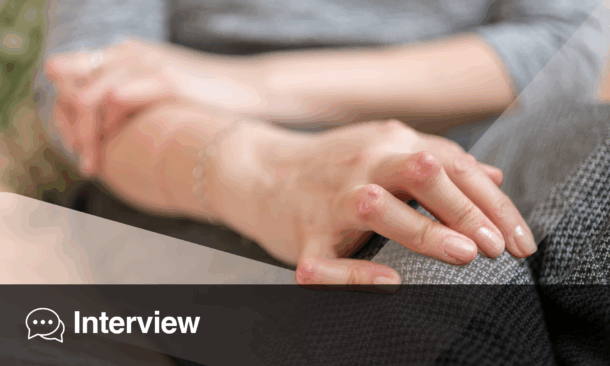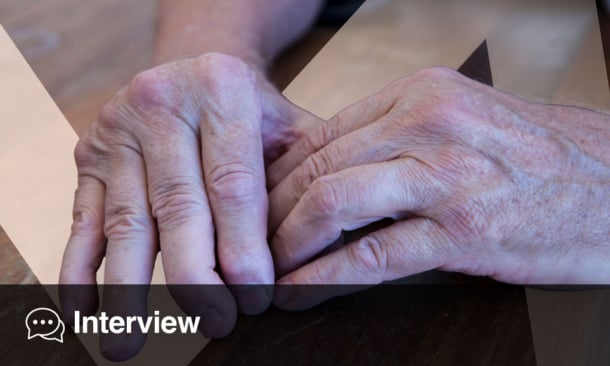Rikke Helene Moe | EULAR VP HPR, Senior Researcher at Health Services Research and Innovation Unit (EHI); Center for treatment of Rheumatic and Musculoskeletal Diseases (REMEDY) at Diakonhjemmet Hospital, Oslo, Norway
Citation: EMJ Rheumatol. 2025;12[1]:60-62. https://doi.org/10.33590/emjrheumatol/UUNK1560
![]()
What do you feel has been the most exciting or impactful theme emerging from this year’s EULAR Congress?
If I must choose one, it is hope. In uncertain times, strengthening scientific collaboration and supporting each other is essential. This sense of hope was visible throughout the Congress in the spirit of innovation, multidisciplinary engagement, and commitment to shared goals. You could see the positive energy everywhere, with people engaging, learning from each other, attending workshops, and even participating in physical activity together.
Under the EULAR umbrella, we stand together as a powerful community of rheumatologists, health professionals, researchers, and patient organisations. Together, we address not only disease activity but also the broader impact of disease, drawing on our diversity of backgrounds and perspectives.
Since we last spoke in 2020, how has rehabilitation in rheumatology evolved, and how was this reflected in the Congress?
Rehabilitation in rheumatology has moved toward more integrated, multidisciplinary care models embracing e-health, patient empowerment, and work rehabilitation. This year’s Congress also reflected a strong focus on other important rehabilitation elements like health literacy, co-morbidity prevention, sustained behaviour change, and complex pain management.
The focus on work rehabilitation was especially prominent. The WORKWELL RCT1 examined a job retention vocational rehabilitation programme, including 249 people with inflammatory arthritis from 18 different centres in the UK. Although the primary outcome, work productivity, did not show a significant difference at 12 months, participants reported greater satisfaction and self-efficacy. Similarly, a Dutch RCT2 recruited 140 people with inflammatory arthritis and showed no clear improvement in quality-adjusted life years (QALY), but revealed cost savings for the intervention group, suggesting that the control group used more healthcare services. From Norway, a large case-control study,3 including 2,710 rehabilitation patients recruited from 17 different centres and 37,760 matched controls, showed that while sick leave decreases right after rehabilitation, long-term benefits usage increased, likely reflecting the complex needs of those referred.
I ask myself: ‘These findings raise important questions to be explored further. What is the right care for the right person at the right time? Are people accessing rehabilitation too late? And are the patients being referred to these initiatives already the most complex cases?’
As EULAR Vice President HPR, what progress are you most proud of, and what are your key priorities?
I am proud of the growing engagement and collaboration among highly skilled health professionals across Europe and beyond. Whether you are a nurse supporting self-management, a physical therapist promoting function and fitness, an occupational therapist supporting daily living, or a psychologist helping restore hope, your role is vital.
Our priority is to strengthen Health Professionals in Rheumatology and multidisciplinary collaboration. Under the EULAR HPR umbrella, we work together with rheumatologists, researchers, and patients. The Congress programmes this year were more extensive than ever, and we continue to expand our educational offerings through EULAR School of Rheumatology (ESOR).
We also provide courses for patients who want to become research partners, and we’ve had several graduates this spring. Supporting research, knowledge translation, and education will continue to be at the heart of our efforts.
You’ve long championed international collaboration. How is EULAR strengthening networks between health professionals, researchers, and patients?
EULAR is unique in including representatives from health professionals, researchers, and patients in every major initiative. We all have a general tendency to approach challenges through our own lenses when looking for solutions, but together we are much wiser. This structure helps us avoid working in silos and encourages smarter, more effective problem-solving.
Cross-border research is critical, but funding constraints often limit feasibility. That is why EULAR Research and the FOREUM Foundation play a key role by supporting multinational consortia and even helping with EU grant applications. International collaboration enhances recruitment, shares expertise, and promotes wider implementation of findings. It ensures that our research is relevant across populations and more sustainable in the long run.
EULAR also brings together an extraordinary range of people, from scientists and clinicians to policymakers and patient leaders. Together, we are working toward a common mission, guided by a shared strategic vision.
You’ve highlighted osteoarthritis (OA) as a major unmet need. What are the current research and care gaps?
There are many unmet needs in the field of osteoarthritis. In an ideal world, the whole population should know how to recognise and prevent the disease, for example, through access to information, simple lifestyle advice, and recommendations on how to avoid joint injury. Research-based models of care are spreading across country borders as we speak, and currently, several research groups are exploring risk factors for progression, how best to prevent or treat OA early, developing effective management strategies, and improving the understanding of pain, genetics, and epigenetics.
While OA research is expanding, there is still a significant imbalance in the sites studied. For instance, much of the focus is on knee OA, with limited attention to other commonly affected joints like the hands and feet. I defended my PhD on hand OA 12 years ago, and while we have recommendations in place,4 dissemination and implementation remain challenging. We must improve both access to care, and how recommendations reach clinicians, patients, and policymakers. EULAR is currently working on this, and I am hopeful that we will see good implementation projects with stronger uptake in the near future. The updated and simplified recommendations for hip and knee OA5 are also a very positive step, but more inclusive research is needed across all joints and all patient groups. Everyone affected by OA, whether in a family, workplace, or sports setting, deserves access to education about the disease, and clear, evidence-based advice on how to manage it.
At the press conference, you discussed recent OA studies, including concerns about the treatment patients with OA really get. Can you elaborate?
One key study,6 examined healthcare service use in the Austrian osteoarthritis registry and found that people with OA were often receiving treatments not based on current evidence. There was a lack of use of certain important recommended treatments and advice. There was, for example, a significant gap between real-world practice and the healthy weight recommendation, as this approach was only applied for about 10% of patients. This highlights the ongoing problem of poor implementation of best practices, an issue echoed in other European studies.7,8 EULAR’s updated recommendations, for example, do not support complementary and alternative remedies and herbs as part of core OA management, but this was extensively used in the population. Knowledge about the recommendations could help health professionals educate and guide patients toward interventions supported by solid evidence.
You’ve emphasised tailored exercise for RMDs. How close are we to making this routine care?
We’re making progress, but there’s still work to do. Exercise is a cornerstone of modern RMD care; it improves pain, stiffness, function, fatigue, and depression, it also reduces the risk of comorbidities, and results from some studies also suggest a beneficial effect on disease activity. General guidelines recommend 150–300 minutes of moderate-intensity aerobic activity and two-to-three strength sessions per week. However, research has shown that one-size-fits-all does not work. Healthcare professionals must be trained to individualize and support exercise programmes. “If exercise were a pill, everyone would take it,” Hippocrates already knew this in the 5th century BC.
We have excellent EULAR recommendations on lifestyle,9 and the updated recommendations for Physical Activity for people with RMDs are coming soon,10 including an update on reducing sedentary behaviour. Implementation will be key to moving from theory to practice here.
Looking ahead, what message should delegates take from EULAR 2025 about the future of rehabilitation and the role of health professionals?
The future is full of potential. With growing research on prevention, e-health, and biopsychosocial health, we can truly transform lives. RMDs contribute to over 50% of years lived with disability in Europe and nearly 40% of work-related illness. Awareness and action are urgent. If you want to get involved, one place to start is to check out the EULAR Advocacy Committee policy activities and take part in World Arthritis Day on October 12.
I have great hope for the future. Stakeholders are working more closely than ever, united by shared goals. I want to thank all healthcare professionals working in the field of rheumatology (regardless of professional backgrounds) for their dedication, flexibility, and expertise, and the patients and patient organisations who guide us with vision and courage, and volunteer to join important research and educational projects. These contributions are deeply valued.








